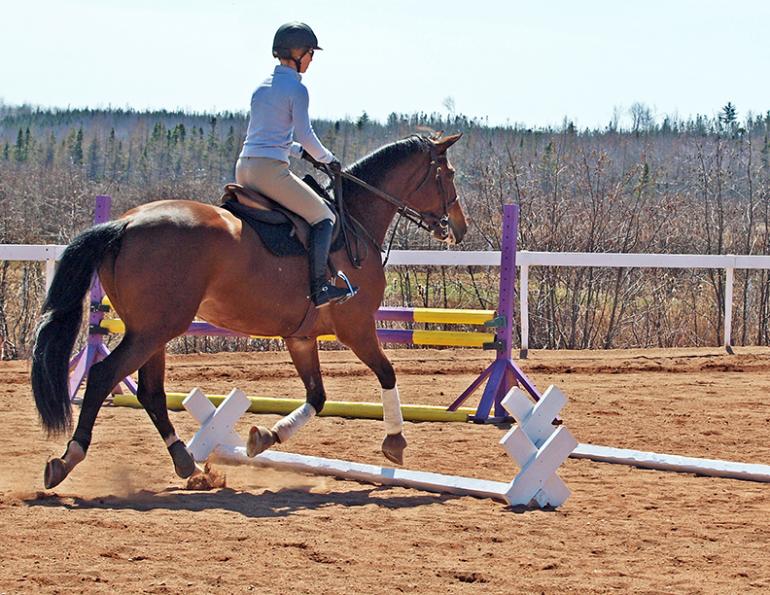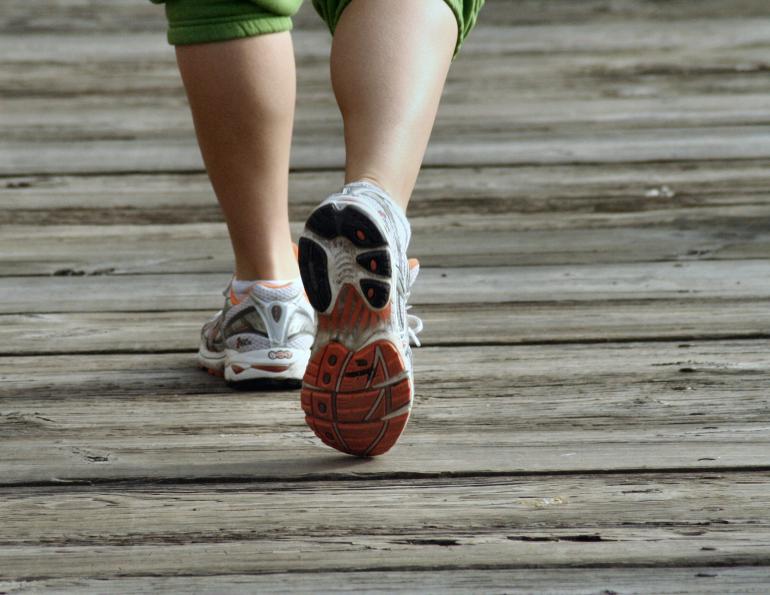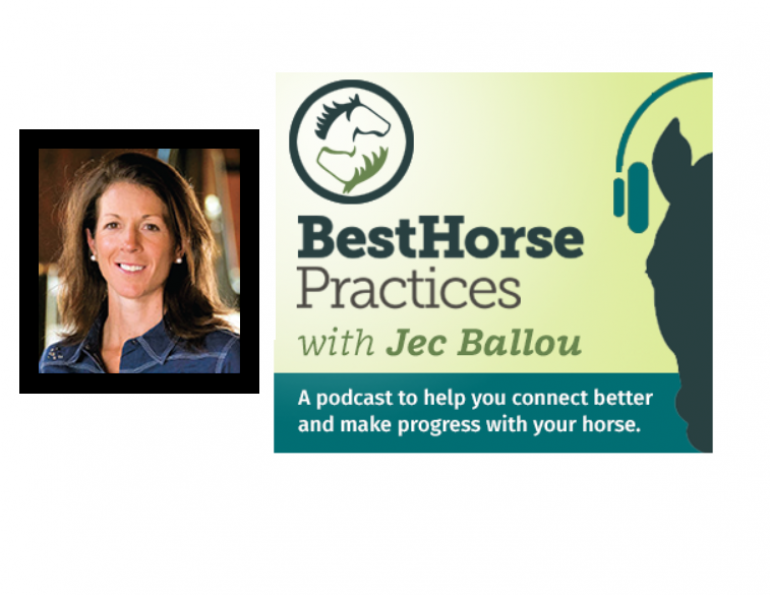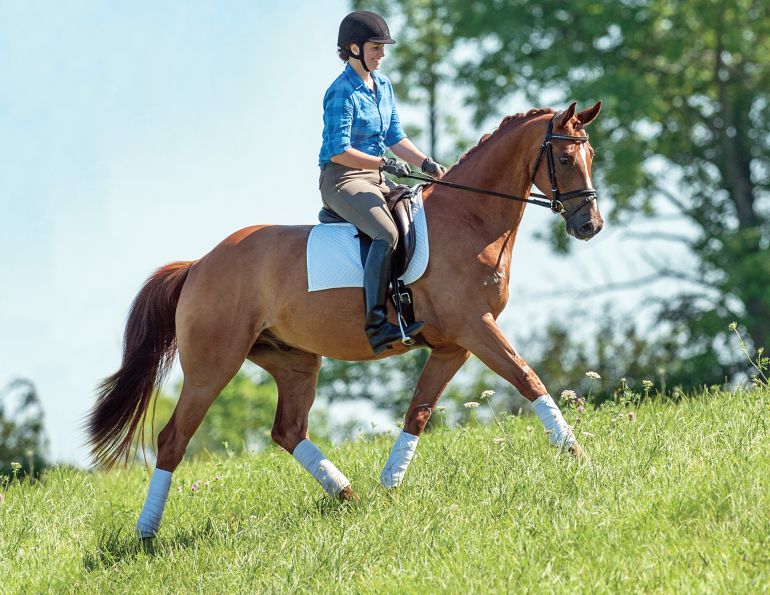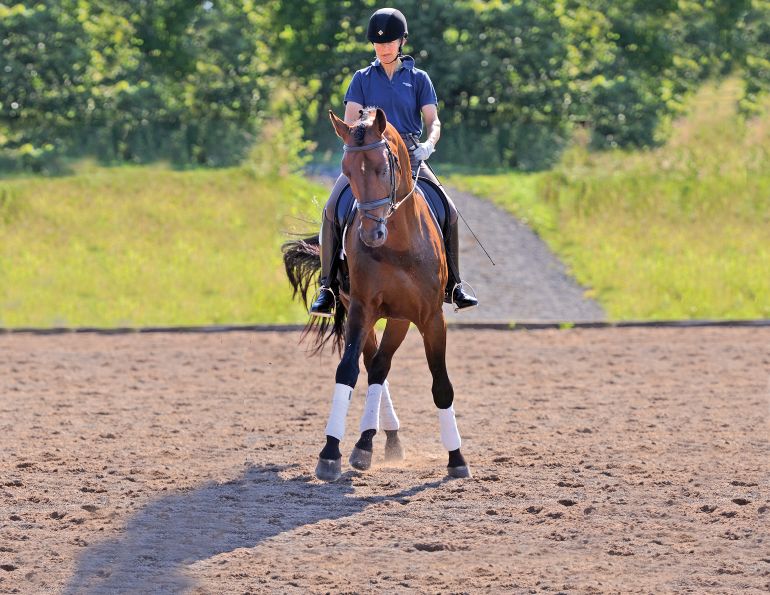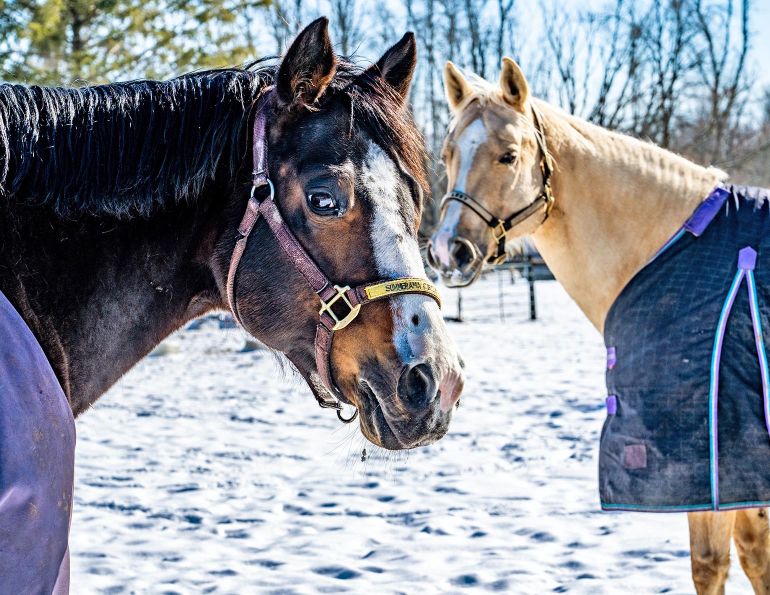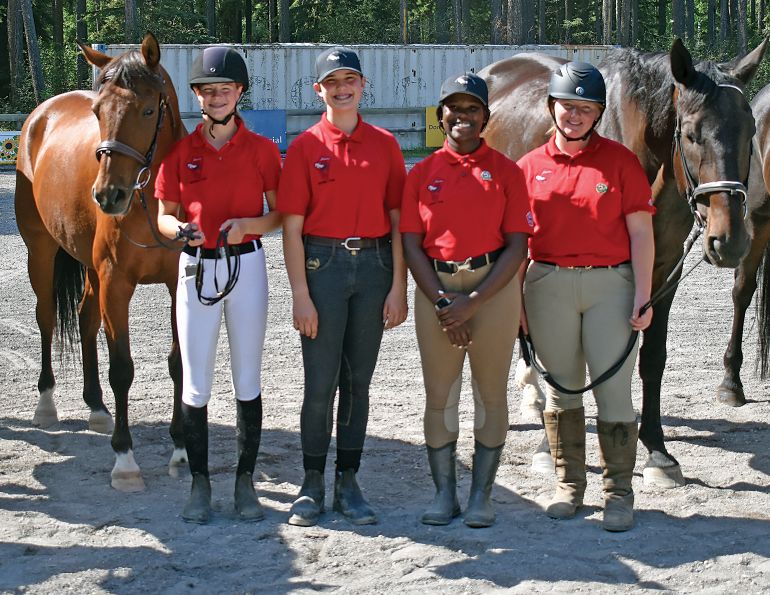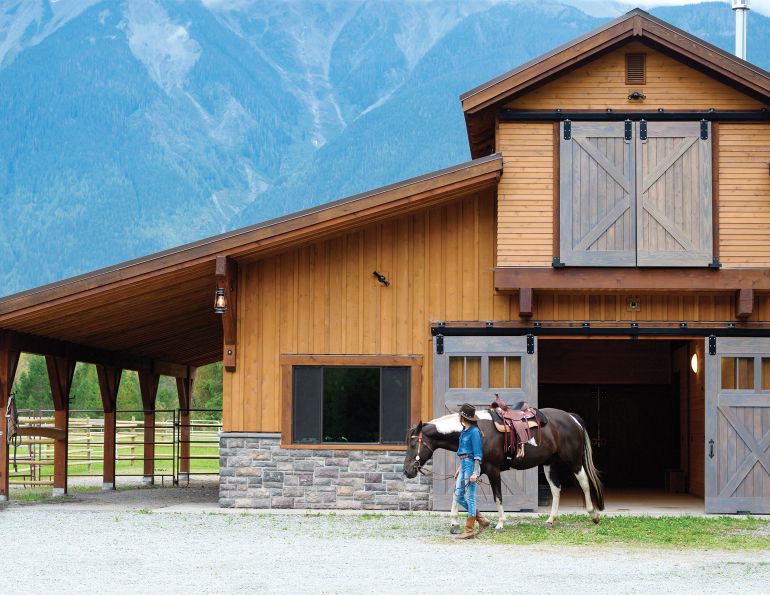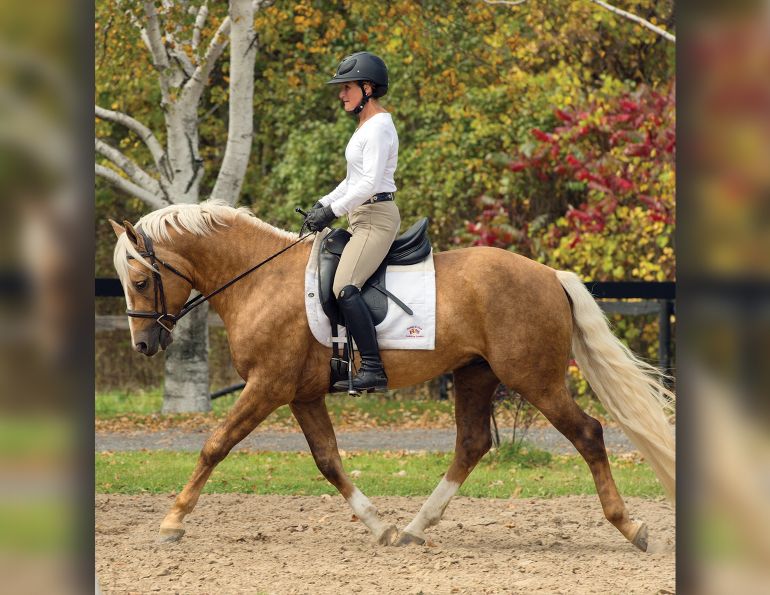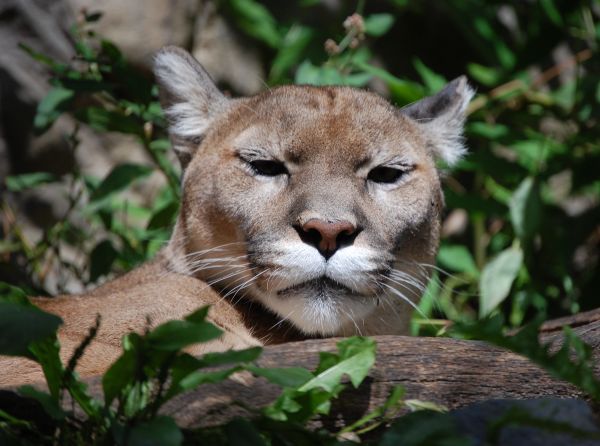By Jec Aristotle Ballou
Each of the horse’s gaits offers a unique tool when conditioning for performance and, used correctly, can accomplish results that might otherwise be missed. Optimally, horses should spend equal time in all three gaits during training sessions in order to achieve both looseness and strength. Certain conditioning phases, though, sometimes necessitate prioritizing one gait over another. This article will clarify how and when individual gaits can serve the equine athlete, especially the way he uses his back, and how cavalletti routines can help.
A majority of riders spend too much time schooling at the same gait and tempo, mainly the trot. While this can indeed lead to improvements in strength, it usually does not foster flexibility nor efficiently change postural habits. In general, walk and canter work are best to create looseness and increase flexibility in the hind joints as well as stimulate postural muscles.
Related: Treats for Horse Training
Any horse that is able to move well must possess not only tone but harmony in the way his muscle chains work together. Restriction or weakness in one area can affect a chain further away and disrupt the whole system. Most critically, the extensor (topline) and flexor (bottom line of horse) chains of muscles must work in balance with each other to achieve correct movement. Too much or too little development in one of these systems disrupts a horse’s potential. The individual contributions of each gait offer the best tools for achieving the right balance of effort. Cavalletti exercises, meanwhile, offer a concentrated way to school each gait.
The Walk
Any time a horse needs to un-learn a poor postural habit — crookedness, stiffness, hollowness — he should spend plenty of time training at the walk. This gait, especially when used in conjunction with cavalletti, allows for training the nervous system to adopt new habits without interference from the larger gymnastic muscles that take over during gaits with more impulsion.
At the walk, riders can re-wire new signals to sensory and motor nerves, increase range of joint mobility, and release restricted areas. When the nervous system is correctly wired for good posture and unrestricted motion, gaits with more impulsion can then have a more positive conditioning effect. As an example, horses with short scuffing trot strides should prioritize riding exercises and patterns at the walk. As these horses work with more flexion in their stifle and hock joints, their quadriceps and flexor muscles will begin to engage more, which in turn leads to better balance between topline and bottom line muscle chains and a looser swinging back with longer strides.
Related: Adjust Your Horse Stretches to Make Progress
Riders sometimes assume they are not getting enough done by schooling at the walk. On the contrary, walking creates looseness, and therefore movement. Without this, there can be no strength gains. Whenever poor posture or restricted movement exist, do yourself and your horse a favour and spend more time training at the walk.
Here are three of the best cavalletti exercises at walk:
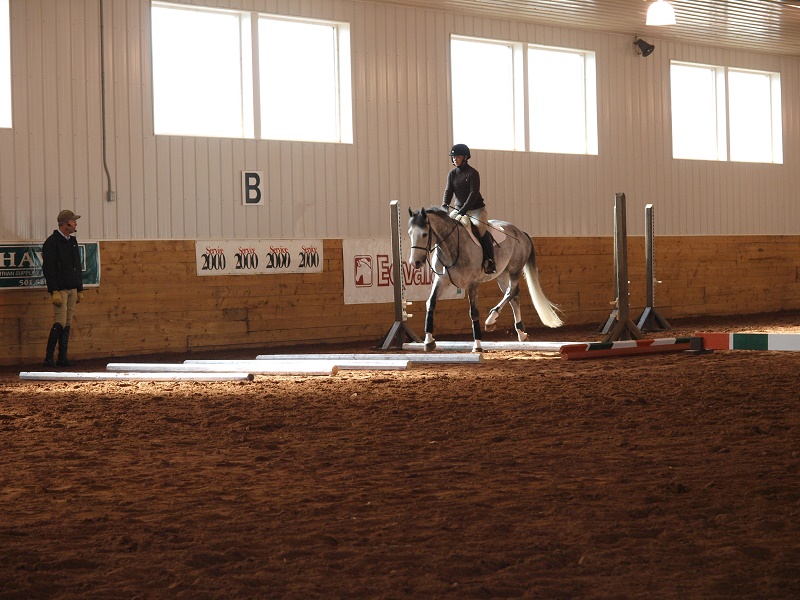

The Trot
The best gait for improving overall cardiovascular and muscle conditioning, trot develops topline tone and function of the muscles that move the horse across the ground. During trot, a horse’s back serves as a balancing rod to support the diagonal action of his limbs, thus requiring that it be firm. This firmness can translate to needed strength for a horse with laxity in his musculature, but it can also unfortunately become the kind of strength that is accompanied by rigidity. When a horse is not confirmed — and relaxed — in correct body posture habits, these large muscles try to multitask. They attempt to do both the job of supporting posture and creating limb movement. Muscles cannot play dual roles like this; they become hard and tense.
Related: Single Pole Exercises
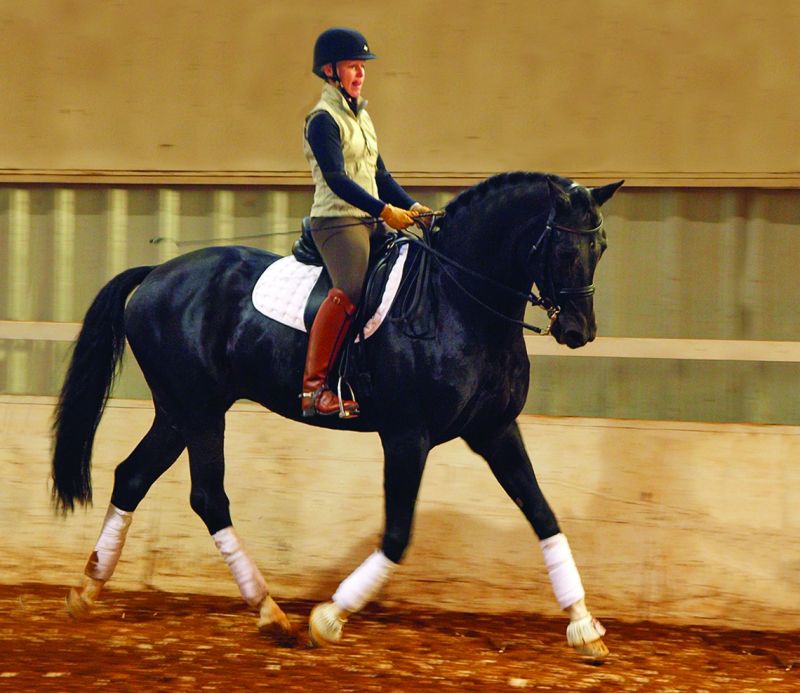
Photo: Pam MacKenzie
When a horse has an ingrained poor postural habit (crookedness, hollowness, over-flexion), too much trotting will only strengthen it. In this case, time is better spent using small amounts of trot for cardiovascular and circulatory wellbeing, but schooling with ample walking exercises to recruit better postural muscles before increasing strength in the gymnastic muscles. Cavalletti patterns, with poles spaced no further than his normal trot stride, ensure the horse organizes his body and rhythm as he develops the trot. The cavalletti will regulate his stride and assist him to move with precise height, length, and speed of stride. This allows his postural and gymnastic muscle systems to achieve harmony while strengthening.
Related: Building Stronger Horses
These three trot cavalletti exercises are useful for horses of all levels. The bending patterns encourage use of the horse’s oblique muscles, which stabilize the torso and lead to springy, expressive movement.
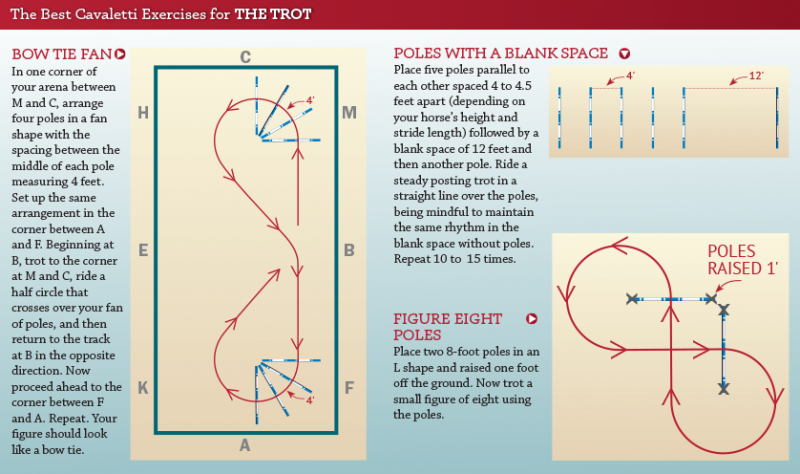
The Canter
Learn to love the canter. This is a mantra I find myself using in clinics. Many riders atop horses that rush, or cross-fire, or give a rough ride at the canter, tend to leave the gait alone and assume that as other gaits improve, so too will the canter. But this plan often does not work. The walk and trot mechanics become stronger while the canter remains undeveloped, which is a shame when considering the physiological payoffs that come from cantering.
Even in the case of less-than-ideal canters, the physical benefits for the horse are huge. Cantering improves your horse’s body symmetry and musculature in ways the other two gaits cannot. Why? It creates unrivaled flexibility in the lumbosacral joint, an area prone to tension that affects a horse’s ability to round his topline. Greater flexion and looseness in the lumbosacral joint means the horse’s whole back can transmit energy from the hind legs, allowing the horse to engage further underneath his body. In walk and trot, there is only minimal movement in this region. At canter, both hind legs swing forward together, thereby rocking the pelvis. Moreover, in canter the forelimbs push the front end upwards to create a moment of suspension. This upward thrust causes a trampoline-like movement in his torso between his scapulae which can help free up areas of tight tissue.
Related: Lunging Horses - Why Bother?
Researchers measuring contractions of the long back muscles have found them to be fullest and strongest in the canter. Cantering is a vital tool, especially for horses with asymmetrical development or difficulties lifting their backs because of stiffness or a pattern of bracing. Cantering is also an asset for horses that “block” their backs or tighten up when asked to come on the bit. It is possible to educate muscles and build strength without cantering, but that strength will lack the agility and looseness through the spine that consistent canter workouts offer.
For best results when schooling canter, try the following exercises. A general rule is to set the poles about 1 to 1.5 feet high, which is high enough that the horse takes them seriously and feels the need to organize himself on the approach.

A well-balanced horse and training program includes equal ratios of time in each gait, but many times a particular phase of a horse’s development should skew in favour of an individual gait, depending on what issues arise. Most generally, trot builds strength while walk and canter keep that strength pliable and loose. When schooling your horse, take time to consider whether the issues you face stem from the need to strengthen his postural or his gymnastic muscles. Let the answer guide you when choosing your gaits and cavalletti routines.
Related: Conditioning Your Horse During Downtime
Related: Trail Horse Training in the Off Season
Main Photo: Pam MacKenzie



